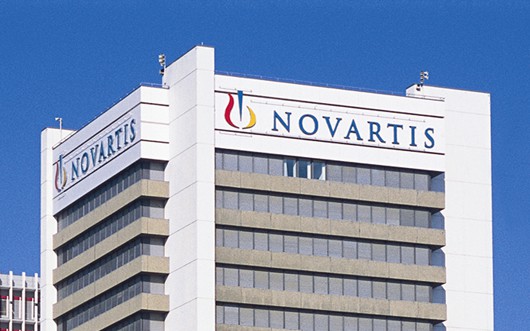
Novartis will present data today showing that its new psoriasis drug Cosentyx is stealing market share from its competitors as it heads towards $4-5bn in peak sales.
The Swiss group is meeting with analysts and investors in Basel today to discuss its strategy for the next few years and update on progress with Cosentyx (secukinumab), heart failure therapy Entresto (sacubitril) and key candidates in its late-stage pipeline.
According to documents published ahead of the event, IL-17 inhibitor Cosentyx has captured almost a third of the market for biological therapies for dermatological applications in Germany, overtaking big-selling rivals such as AbbVie’s TNF blocker Humira (adalimumab) and Johnson & Johnson’s IL-12/23 inhibitor Stelara (ustekinumab), claims Novartis.
Already approved for psoriasis, psoriatic arthritis (PsA) and ankylosing spondylitis (AS), Novartis has a pivotal trial in non-radiographic axial spondyloarthritis on-going as well as head-to-head superiority trials versus Humira in PsA (EXCEED) and AS (SURPASS).
Novartis highlighted plans for Entresto – also tipped to become a $5bn product – last week when it unveiled its wide-ranging FortiHFy clinical programme designed to accelerate and expand uptake of the drug.
While the drug is growing slowly in the US, it is doing much better in Europe. Novartis says it will expand its US salesforce by 50% and start direct-to-consumer (DTC) advertising to help redress the balance, as well as trumpet the recommendations for the new drug in updated US and EU clinical guidance.
The company also emphasises the strength of its pipeline beyond Entresto and Cosentyx in the presentations, and identifies six late-stage projects that it considers high priority.
These include RLX030 (serelaxin) for acute heart failure, Fovista (pegpleranib) and RTH258 (brolucizumab) for neovascular age-related macular degeneration (AMD), and novel migraine prevention drug AMG334.
Particular attention is given in its presentations to two new candidates – multiple sclerosis candidate OMB157 (ofatumumab) and QAW039 (fevipiprant) for asthma.
OMB157 binds to the CD20 receptor and has the potential to be a best-in-class anti-B cell therapy, according to the group. It will start a phase III programme later this year, with first regulatory filings expected in 2019.
Meanwhile, QAW039 is an orally-active CRTh2 receptor antagonist, which could be a first-in-class asthma. It has already shown promise in a phase II trial and could be also ready for filing in 2019.
Immuno-oncology drive
Novartis also highlights its immuno-oncology assets, currently headed by CDK4/6 inhibitor LEE011 (ribociclib) for first line HR+/HER2- metastatic breast cancer, which has just cleared a phase III trial.
The company is considered to have missed out on the initial push into immuno-oncology, but says it is planning to have 15 molecules in clinical trials by the end of the year, of which a dozen could be first-in-class.
It also says the current crop of PD-1/PD-L1 and CTLA-4 inhibitors have limitations that could be overcome by its ‘second generation’ molecules.
“The environment in which we operate is changing, and we are positioning Novartis to thrive in this environment,” said Novartis’ chief executive Joseph Jimenez in a statement released this morning.
“Our strategy is to sharpen our focus in areas where we are strongest; ensure that we have the global scale to compete profitably across geographies; and have the innovation power to address unmet medical needs.”




